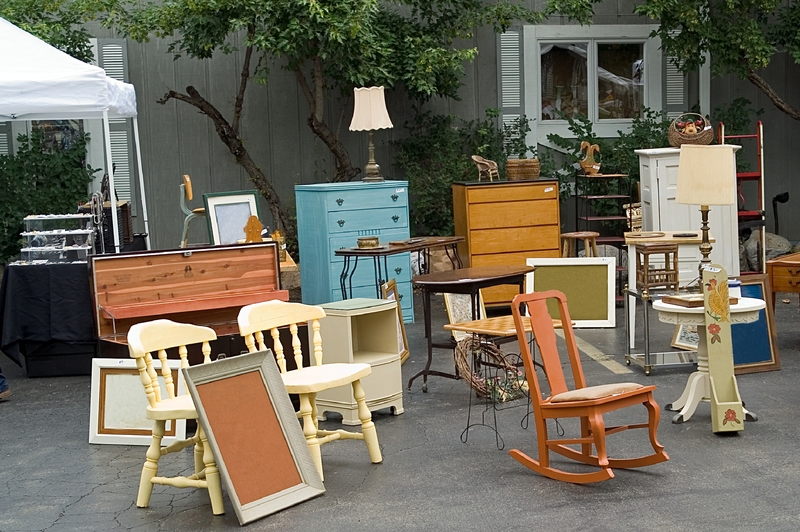The Creative Side of Garbage Removal: Artistic Recycling
Posted on 01/08/2024
In the modern world, waste management has become a pressing issue. With the continuous increase of population and consumption, the amount of garbage produced is also on the rise. According to the World Bank, global waste generation is expected to reach 3.40 billion tonnes by 2050. This alarming statistic highlights the need for effective and sustainable methods of garbage removal. However, there is one aspect of waste management that often goes unnoticed - artistic recycling.
Artistic recycling, also known as upcycling, is the process of transforming discarded materials into valuable and aesthetically pleasing products. It involves using creativity and innovation to give a new life and purpose to items that would otherwise end up in landfills or incinerators. This approach not only helps in reducing the amount of waste produced but also promotes a greener and more sustainable way of living.
One of the most creative forms of artistic recycling is creating art pieces from trash. Artists all over the world are using this method to raise awareness about waste management while also showcasing their talent. For instance, German artist HA Schult created an installation called "Trash People" which consisted of sculptures made entirely out of garbage collected from various cities around the world. This powerful piece not only drew attention to the growing problem of waste but also highlighted the potential beauty that can be found in things we consider as trash.
Moreover, artistic recycling also encourages people to think outside the box when it comes to waste disposal. Instead of simply throwing away old or broken items, individuals can use their imagination and turn them into something unique and useful. This could be anything from repurposing glass bottles into vases or making jewelry out of old newspaper strips. The possibilities are endless and it all starts with a simple change in mindset.
Besides being a creative outlet, artistic recycling also has many environmental benefits. By reusing materials, it reduces the need for new raw materials to be extracted and manufactured, thus conserving natural resources. It also decreases the energy consumption and greenhouse gas emissions associated with producing new products. In addition, it helps in reducing the amount of waste sent to landfills, which ultimately extends their lifespan.
However, like any other method, artistic recycling also has its drawbacks. The process requires a significant amount of time and effort to create a finished product, which may not be feasible for everyone. It also requires a certain skill set and creativity, which some people may not possess. Another challenge is finding a market for these recycled products and convincing people to pay for them as they are often more expensive than mass-produced items.
To overcome these challenges, here are some tips for individuals interested in incorporating artistic recycling into their lives:
1. Start small: Begin by repurposing simple items such as glass jars or old t-shirts before moving on to larger projects.
2. Learn new skills: Take classes or watch tutorials online to learn different techniques and gain inspiration.
3. Collaborate with others: Join local communities or art groups to share ideas and collaborate on projects.
4. Look for potential materials: Keep an eye out for discarded materials that can be transformed into something new.
5. Educate others: Spread awareness about the benefits of artistic recycling and encourage others to join in.
In conclusion, artistic recycling is a creative and sustainable way of dealing with waste. It not only helps in reducing the negative impact of garbage on the environment but also provides individuals with a platform to express their creativity. By incorporating this practice into our daily lives, we can make a significant difference in creating a greener and cleaner world for future generations.
Pros:
- Promotes sustainability and conservation of natural resources
- Encourages creativity and innovation
- Reduces the amount of waste sent to landfills
- Raises awareness about waste management

Cons:
- Requires time, effort, and specific skills
- Finding a market for recycled products may be a challenge
- Can be more expensive than mass-produced items

Tips:
- Start small and gradually incorporate artistic recycling into your routine
- Learn new skills and techniques to enhance your creativity
- Collaborate with others to gain inspiration and share ideas
- Keep an eye out for potential materials in your daily life
- Educate others about the benefits of artistic recycling.
Takeaways:
- Waste can be transformed into valuable and beautiful products through artistic recycling
- Everyone has the potential to contribute and make a positive impact on waste management
- Creative thinking can lead to sustainable solutions
- Small changes in behavior can make a big difference in reducing waste.
In conclusion, artistic recycling is not just about garbage removal, it is about seeing the potential in what we consider as trash. It is an opportunity to create something unique and meaningful while also making a positive impact on the environment. Let us all do our part in promoting this creative way of managing waste for a better, greener future.






